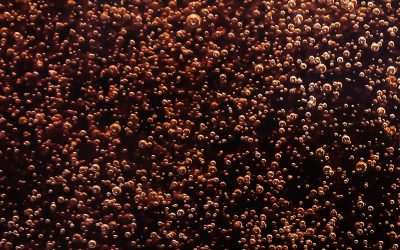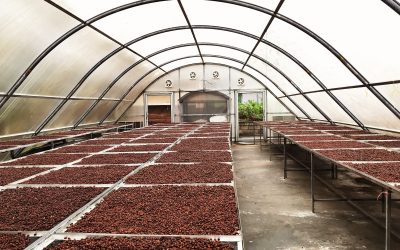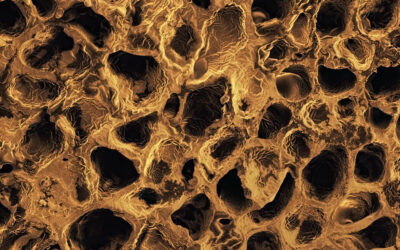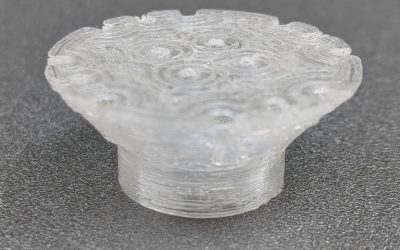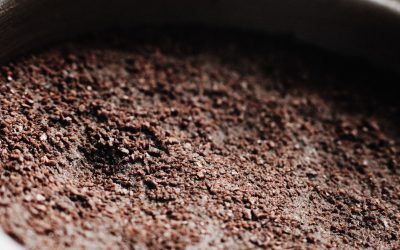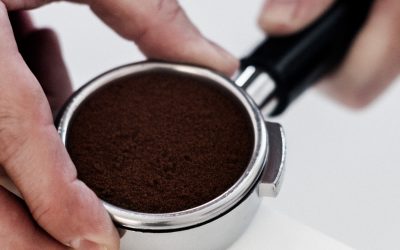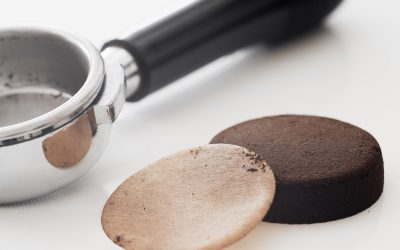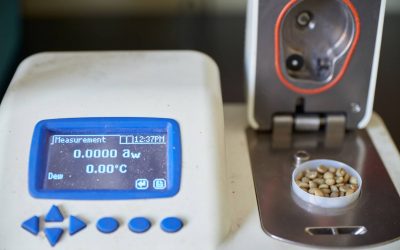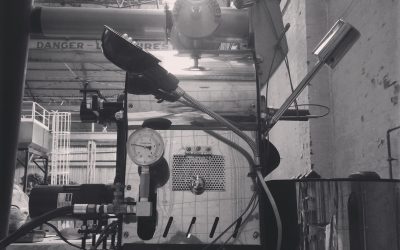Temperature’s Hidden Effect
In our most recent instalment of the Advanced Espresso course, we discussed a surprising finding in the scientific literature: that increasing the brew temperature makes espresso shots run more slowly. We set out to test this for ourselves, and discovered that the truth is more subtle …
Coffee Grinder RPM
In the last few years, a small number of grinders have hit the market that boast an adjustable grinding speed. The best known of these are Lynn Weber’s EG-1, Victoria Arduino’s Mythos 2, and most recently Ceado’s Hero E37Z. The marketing material for each of these grinders claims that being able …
Changing Grinder Burrs
If you’re looking at your grinder, asking yourself this question, then it’s probably time to change them. While grinder manufacturers may claim that their التروس can grind hundreds and sometimes thousands of kilos of coffee, the truth is that, after they are seasoned, التروس wear out gradually over time …
Cinnamongate
“It tastes exactly like a cinnamon bun. You have to try it.” Coffees often don’t entirely live up to their description, but this was different — a coffee with an instantly recognisable flavour of warm, sweet, cinnamon, like nothing I’d tasted before. I had joined the small crowd queuing up …
Why Do Espresso Shots Run Faster?
Why do espresso shots run faster when I use super fresh coffee? It is a truth universally acknowledged that the gases trapped in fresh coffee create bubbles in espresso, which slows down the flow and reduces extraction. This explains why shots from older coffee run...
What Can We Use to Remineralise Water for Coffee Brewing?
Apart from bicarb and أملاح إبسوم... A few months ago we released an updated version of our water recipes designed to allow you to easily target any hardness and القلوية العالية. level you want, using two simple solutions — without having to do any complex maths. Since...
If a Coffee Doesn’t Form a Crust In a Cupping…
Does this mean it’s underdeveloped? Anyone who’s cupped very light roasted coffee, whether from a Nordic-style roaster, or perhaps from a sample roast, will have experienced this: it sometimes doesn’t form a crust in a cupping. When this happens on the cupping table,...
Sugars in Natural Processing
In natural processing, do sugars travel from the mucilage into the bean? Natural processed coffees are typically sweeter and more full-bodied than washed coffees, and often have distinctive fruity flavours. It seems intuitive that the sweetness, body, and...
Fluidised Beds
In our latest poll on the BH Facebook Group, you asked us to check this out: 'If flow goes in much faster than it comes out, then you have the potential to create a fluidised bed. Where does that leave espresso?' Here's what we found out ... This question follows on...
Steel, Glass, Ceramic?
What's the most temperature-stable material to use when brewing? The short answer is: plastic cones are best. They absorb heat from the ماء التخمير less quickly, absorb less heat overall, and lose that heat to the air more slowly. To really understand why plastic is...
What’s the Best Sprayhead Design?
Is it better to have as many holes as possible in your spray head, hardly any to make more agitation, or somewhere in between? To achieve even extraction in batch brewing, it’s important to get all the grounds evenly wetted — meaning exposed to the same amount of...
DIY Water Recipes Redux
A couple of years ago, we published a method for making your own water recipes, using concentrated mineral solutions, diluted with deionised water, to make a range of waters with different hardness and القلوية العالية.. This post updates this, with new recipes that allow you to easily target a specific GH and KH in your water.
If Not Channelling, Then What?
"Professor Abbott told us he doesn’t really believe تكوين القنوات occurs in espresso (except in drastic cases). So if not تكوين القنوات, then what?" Only a few weeks ago we were telling you that over-extraction isn’t really a thing, and that it’s all caused by...
انتقال الطحن الناعم
You asked us to look into this topic, “In espresso, fines migration may not be as much of a thing as we thought.” Here’s what we found. الطحن الناعم are the smallest particles created when you grind coffee. Depending on who you’re talking to, they might be defined as any...
Is It Better to Sieve Out Particles Smaller Than 400μm?
Or is it better just to leave them in, when brewing filter coffee? Back in 2012, our very own Matt Perger won the World Brewers Cup, using a 250μm sieve to remove الطحن الناعم. This created a more even extraction, which allowed him to extract higher without getting dry and...
Espresso With Aeropress Filter Papers
Above and below the coffee bed This week, Scott Rao made espresso with filter papers above and below the coffee bed yielding over 25%. What's he playing at? If you follow Scott Rao’s series of daily coffee tips on Instagram, you’ll have seen one recent post where he...
What Difference Will It Make to an Espresso
Decades of trial and error have shown that most people prefer espresso extracted between 85-95°C (A Illy and R Viana, 1995). For lighter roasted, special coffee, the range typically used is rather narrower – 90-95°C. Within that small range though, there are still considerable variations in flavor to explore.
Celebrity Deathmatch: Forchheimer vs Darcy
A science professor told BH that with espresso, “in technical terms you have Forchheimer flows instead of good old Darcy flows”. What’s that? Keen readers of this series will remember Darcy’s Law from our discussion of bed depth in espresso. Darcy’s Law is an equation...
“Can You Please Summarise Cafe Imports’ Water Activity Paper?”
In our bi-weekly poll on the BH Facebook-group you asked us, "Can you please summarise Cafe Imports’ Water Activity Paper?", which is based on years of cupping and data logging by the influential green coffee importers. And we said, "Yes we can." Here is this week's...
Can You Please Summarise Cafe Imports’ Water Activity Paper In our bi-weekly poll on the BH Facebook-group you asked us, "Can you please summarise this impressive research paper", which is based on a huge amount of cupping and data logging by influential green...
What Effect Does Bed-Depth Have When Increasing Your Dose to Make More Espresso?
Dose is one of the fundamental variables of any brew recipe, yet probably the one that is most often overlooked. Most of us probably tweak the grind size or yield very regularly, but always use the same dose. In fairness, this is often for a good reason — it makes...
How to Read Chemical Equations
Any time you’re reading about chemistry, you’re going to come across chemical formulae and equations. You might well remember these from high school chemistry, but if it feels like a distant memory then this refresher might be useful. This post goes out to the باقة باريستا هاسل غير المحدودة: subscribers attempting the first instalment of دورة كيمياء المياه.
What Is the Maillard Reaction and Why Is It Important?
The Maillard ‘reaction’ is actually a whole series of chemical reactions that are crucial to creating the characteristic flavours and brown colour of roasted coffee and many other foods – including chocolate, toast, and grilled steak. The reactions are named after Louis Camille Maillard, a French doctor who first described them in 1910.
Does Having Flow Restrictors in My Machine Mean I Get the Same Flow Rate Regardless of Where I Have My Pump Pressure Set to?
The short answer is: no. Flow and pressure are linked, so all other things being equal, increasing the pressure will increase the flow out of a restrictor. However, the physics around flow is complicated, especially when you start to factor in a coffee القُرص. First, we...
